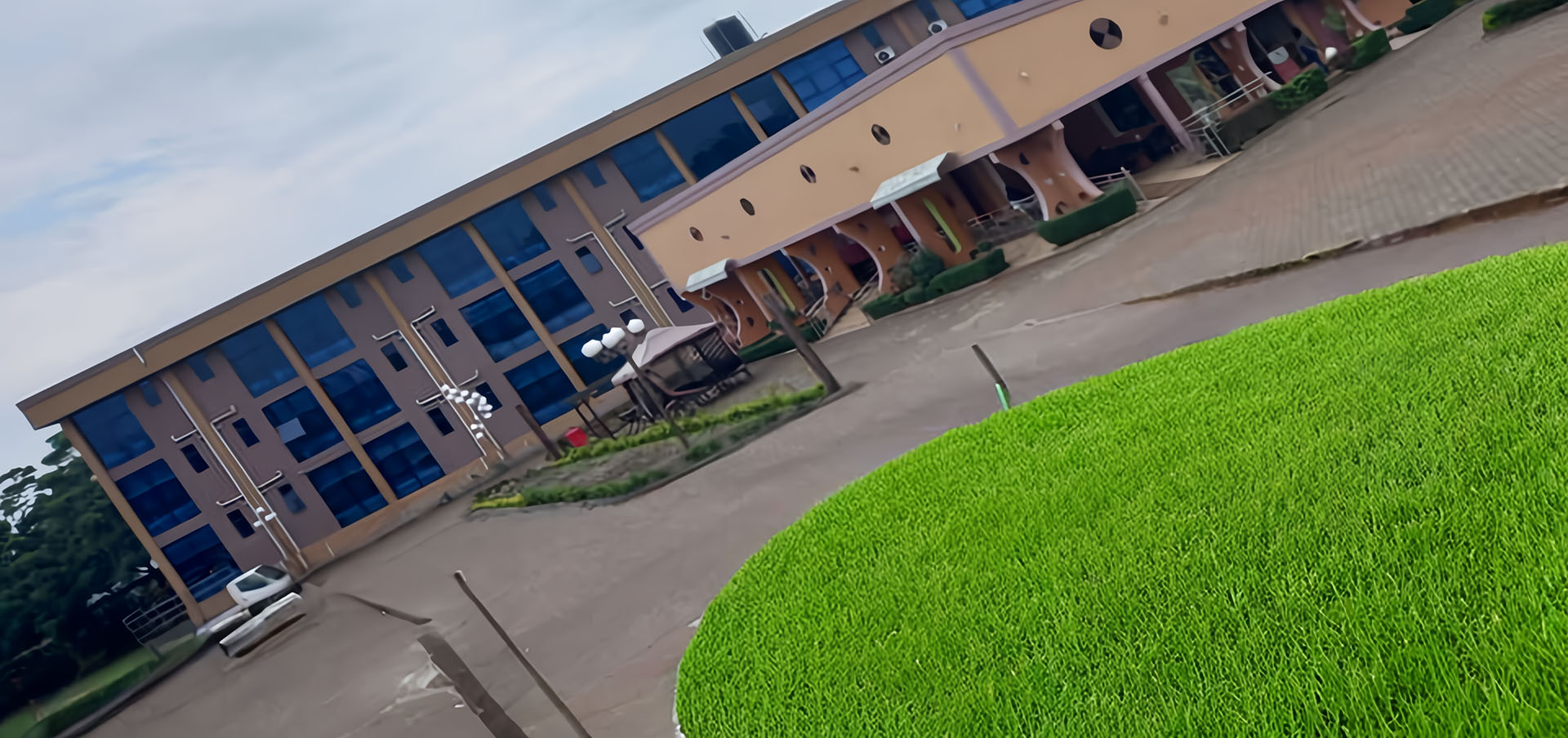A Ugandan tour? Did that ever cross your mind? If it hasn’t, well, sit tight and brace yourself because, by the end of this guide, you’ll be frantically packing your safari hat and binoculars while humming to the rhythms of traditional Ugandan drums. We’re diving into a journey that promises more than just Kampala’s memorable traffic jams – although let’s be honest, it’s its own kind of wildlife experience! Strap in as we guide you through the wonders of Uganda, from lion selfies to the mesmerizing dance of the silverback gorillas.
Top Natural Attractions: Ugandan Tour Destinations Reviewed!
Murchison Falls
Ever seen water crash down with such fury that you’re left questioning your life choices? Welcome to Murchison Falls! This spectacular wonder is not just another pretty waterfall. Oh no! It’s where the Victoria Nile, feeling a tad dramatic, decides to squeeze its voluminous self through a sassy 7-meter wide rock gap. This results in it hurtling down a whopping 43 meters, offering a spectacle reminiscent of your morning shower – if your shower was on a massive, epic, Hollywood blockbuster scale, of course.
Now, for a sprinkle of history – and who doesn’t like their nature served with a side of tales? Some say that way back in 61 AD, a gang of Roman explorers dispatched by the emperor Nero himself might have reached these falls. “Nero’s Roman Holiday in Uganda”? Maybe! However, it’s debated whether they could pull off such a Herculean feat. We’ll never truly know. What we’re more certain of is that the first Europeans to lay eyes on these falls were Samuel and Florence Baker. Samuel, in what we can only imagine was a “Eureka!” moment, named them after his mate Roderick Murchison, a bigwig at the Royal Geographical Society. It’s always good to name natural wonders after your friends, right?
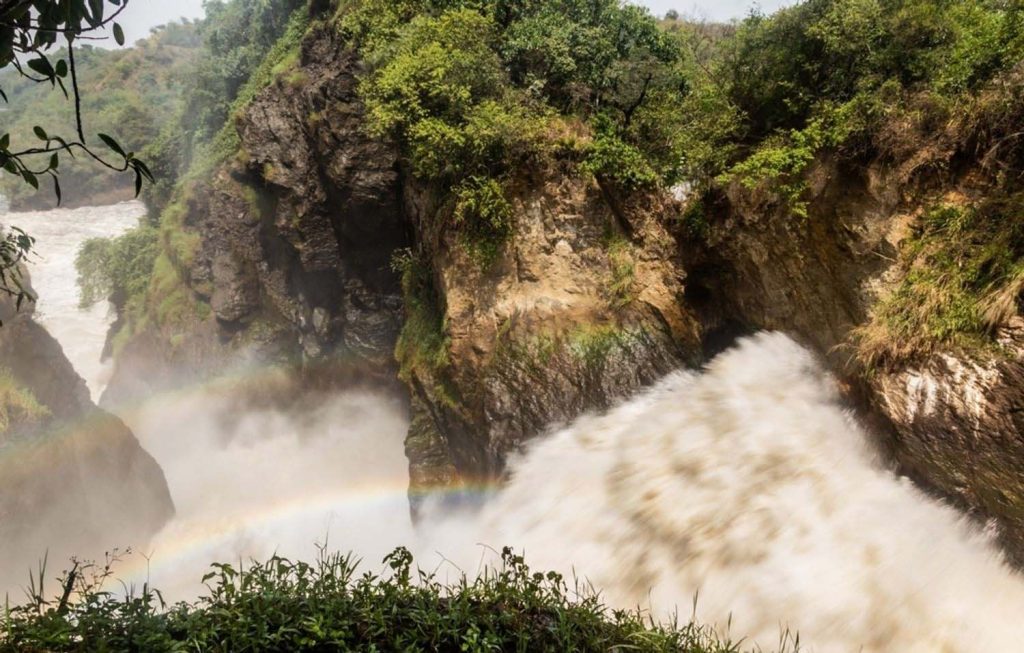
The falls weren’t always called Murchison Falls, though. During a dramatic period under Idi Amin’s rule in the 1970s, they were rechristened Kabalega Falls, in honor of the King Kabalega of Bunyoro. But like all good TV soap operas, they went back to their original name post-Amin. Still, don’t be surprised if some locals give you a knowing wink and refer to them as Kabalega Falls.
Fun fact, or rather a not-so-fun fact for him: the legendary writer Ernest Hemingway crashed his plane just a smidge downriver from Murchison Falls in 1954. Let’s just say it wasn’t his most eloquent moment.
Finally, a shoutout to Uganda for being the real MVP! In 2019, they turned down a tempting hydropower project to preserve this majestic site. The Murchison Falls aren’t just a testament to nature’s drama; they’re a reflection of the country’s commitment to conserving its natural treasures.
So, whether you’re here for the waterfall’s cinematic display, its roller-coaster history, or to pay homage to Hemingway’s unintended adventurous landing, Murchison Falls is bound to leave you spellbound. Now, onwards to more Ugandan wonders! Shall we?
Mount Elgon
This extinct volcano isn’t just another mountain. It’s the stage for one of Africa’s most unique landscapes. You’ll find caves formed by moving lava, hot springs that tempt you for a dip, and even ancient paintings if you squint hard enough. I mean, how often do you come across a mountain that’s basically a multi-faceted tourist attraction?
Mount Elgon – now there’s a name that might sound a bit familiar to geography enthusiasts, history buffs, or just anyone on an epic Ugandan tour. Located right at the crossroads of Uganda and Kenya, Mount Elgon is more than just any shield volcano. It’s an ancient relic, boasting an age of around 24 million years. For context, that’s way older than your Grandma’s cookie recipe. And you know what else? Its highest point, Wagagai, sits proudly in Uganda, making it an absolute must-visit during your Ugandan tour.
Now, you might be asking, “What makes this mountain more special than my last uphill trek?” First off, the sheer size. It rises like a sleeping giant, 3,070 meters above the plains, and sprawls across a diameter of 80 kilometers. That’s like going for a lengthy marathon, but vertically.
Mount Elgon isn’t just one peak. Oh no, it’s flaunting a total of five peaks! There’s the crown jewel, Wagagai, followed closely by Sudek, Koitobos, Mubiyi, and Masaba. And if you’re into giant holes in the ground – who isn’t? – Elgon sports one of the largest intact calderas in the world. Just imagine the selfies!
But wait, there’s more! The mountain is a haven for thrill-seekers and nature lovers alike. Fancy exploring caves? Check out Kitum Cave, which isn’t just any old cave. Elephants love to give it a visit, gouging out walls with their tusks to reach and lick salt deposits. Just a little spa day for the pachyderms. Oh, and did I mention the warm springs by the Suam River? Perfect for relaxing your sore muscles after all that exploring.
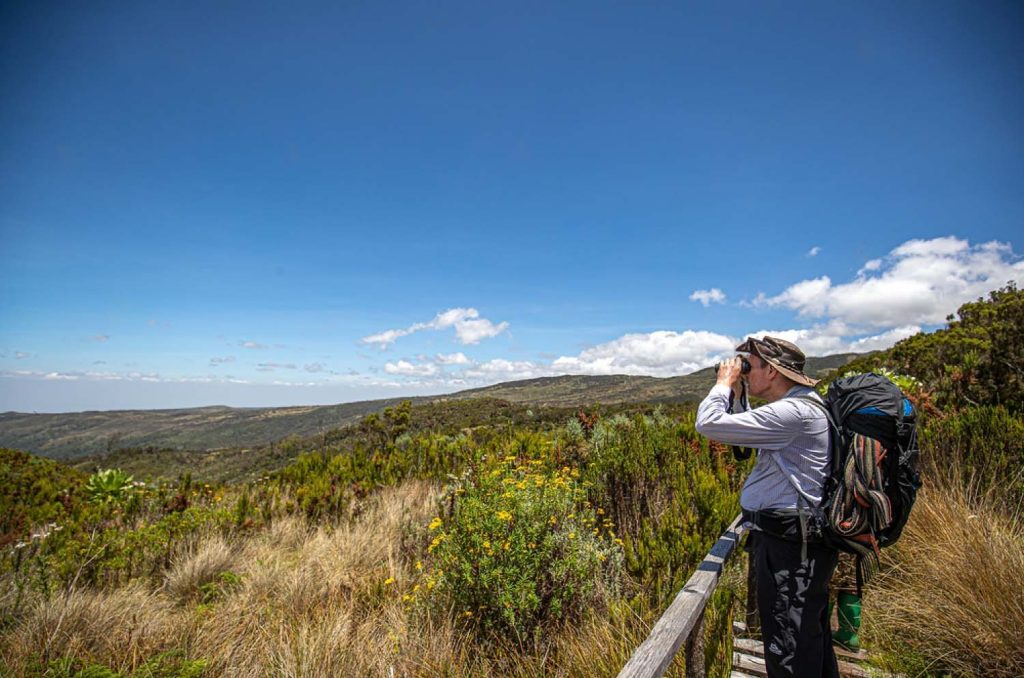
Wildlife enthusiasts, bring out those binoculars! Mount Elgon hosts a unique mix of fauna. African bush elephants call this area their chill spot, particularly on the Kenyan side. Plus, there are mammals and birds unique to this mountain, making it a treasure trove for biodiversity. And let’s not forget the flora – from rare plants to unique subspecies, this mountain is basically Mother Nature’s botanical garden.
But a mountain is more than its flora, fauna, and geological features. Mount Elgon is the heart of five tribes, a blend of cultures and traditions that have withstood the test of time. The Bukusu, Bagisu, Sapinjek, Sabaot, and Ogiek all find their roots intertwined with this mountain, offering a rich tapestry of stories and traditions.
To sum it up, your Ugandan tour would be a tad incomplete without a rendezvous with Mount Elgon. Whether you’re in it for the physical challenge, the natural wonders, or a cultural immersion, this mountain promises an adventure of a lifetime. Now, having conquered a volcano, are you ready for what the rest of Uganda has in store? Onward, dear traveler!
Wildlife encounters in Uganda
Up Close with Gorillas
If you’ve ever had an inkling to channel your inner Jane Goodall, buckle up, because Bwindi Impenetrable National Park is about to be your new favorite spot on a Ugandan Tour. Nestled in southwestern Uganda, this lush slice of wilderness feels like something straight out of a fairy tale, except instead of dragons, you get to meet real-life gorillas. (And, let’s be honest, that’s infinitely cooler.)
First things first: it’s called “impenetrable” for a reason. This isn’t your stroll-in-the-park kind of park. Oh no, it’s only accessible on foot, making it the VIP room of national parks. But the trek is worth every sweaty step, because waiting inside is a biodiversity jackpot. We’re talking 120 species of mammals, 350 varieties of birds strutting their stuff, and even a dizzying array of 310 butterfly species, because, why not?
Amidst this wildlife wonderland, the true stars of the show are the Bwindi gorillas. Now, if you’re imagining a couple of gorillas casually lounging around, think bigger. The park is home to a whopping half of the world’s population of endangered mountain gorillas. Yes, that’s right. Half! And they’re not just hanging around waiting for paparazzi. These gorillas are part of 14 habituated groups that have basically been trained to tolerate us curious humans, making your face-to-face encounter even more magical.
Now, a pro-tip for the eager gorilla enthusiast on their Ugandan Tour: while it’s tempting to get into a staring contest with these magnificent creatures, it’s a no-no. Trust me, they’ve got the soulful gaze down to an art, and you won’t win. Instead, just marvel at their sheer presence, take in every grunt, gesture, and giggle (yes, they do that!) and relish this unparalleled experience.

Getting to this hidden gem might take a bit of legwork (or wheel work). The roads may give your suspension a workout, and the eight-hour drive from Kampala might test your playlist creativity. But, if driving isn’t your thing, there are always domestic flights that drop you off right at the doorsteps of adventure. And once you’re there, whether you bunk down in a lodge, a tented camp, or a community-run room, the Ugandan hospitality will make you feel right at home.
Also, here’s a fun side note for all the healthcare enthusiasts out there: Bwindi Community Hospital provides health care to the local 40,000 and the occasional clumsy tourist who might’ve had a tiff with a tree root. Safety first, right?
By the end of your visit, with memories of gorilla encounters, guided forest walks, and waterfall visits, you’ll probably be planning your next Ugandan Tour. But for now, as you leave the whispers of the forest behind, get ready, because the next section awaits with even more Ugandan wonders. Let’s dive in!
Lion Selfies in Queen Elizabeth National Park
Okay, the selfies might be a stretch, but imagine this – you’re in the Queen Elizabeth National Park (let’s not get it mixed up with that English one – no royalty here, except the lions), and you see tree-climbing lions just lazing around, pretending they’re house cats. It’s almost like they’re plotting their next viral Instagram post. Don’t be fooled. They’re just taking a brief siesta from their antelope-chasing duties.
Now, for those unfamiliar, Queen Elizabeth National Park is not just any park in the Ugandan tour catalog; it’s the park. Nestled in the Western Region of Uganda, this park has quite the resume. Spanning across several districts, it’s roughly a 7-hour 30-minute scenic drive from Kampala. But, if you’re more of the “I want to get there NOW” type, you can also hop on a daily domestic flight, which might give you a bird’s-eye view of the lions planning their next ambush or perhaps a leisurely hippo swim in the Kazinga Channel.
Ah, the Kazinga Channel! Imagine sunbathing hippos and Nile crocodiles just lounging. Not together, of course! That would be a different kind of show. This Ugandan tour promises not only the view of the famous tree-climbing lions but also 94 other mammal species, including the elusive leopard, spotted hyena, and, let’s not forget, the majestic Ugandan kob. It’s basically the ultimate wildlife buffet (for your eyes, not for eating!).
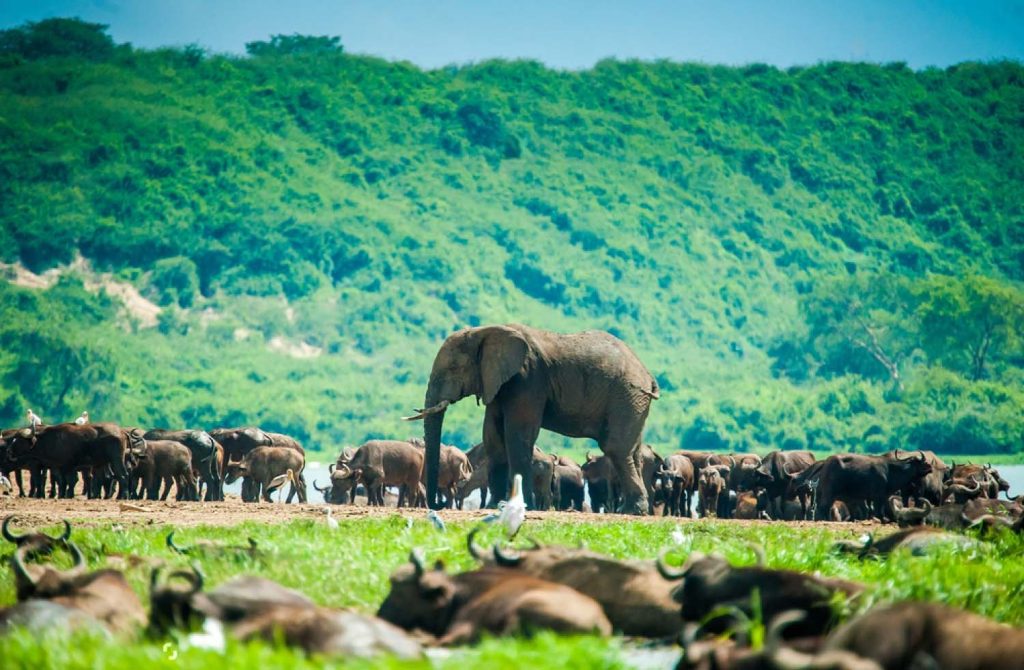
Speaking of buffets, there’s a historical twist in the park’s tale. It was once called the Kazinga National Park, but after Queen Elizabeth II visited (probably didn’t take any lion selfies, though), they renamed it in her honor. And while the park’s history had its rough patches, today, it stands as a testament to conservation efforts, especially those focused on the lions. By the way, if you fancy tracking these kings and queens of the jungle, you can join the Uganda Carnivore Program. The proceeds? They go right back to the lion-saving business.
But it’s not just about the lions, okay? This park is volcanic-tastic! There are volcanic cones, deep craters, and even crater lakes where the local entrepreneurs extract salt. Maybe you can grab a pinch for that exotic touch to your next homemade dish?
In conclusion, if you’re planning a Ugandan tour, and you don’t have the Queen Elizabeth National Park on your list, you’re doing it wrong. It’s the perfect blend of humor, adventure, and raw nature, all sprinkled with a touch of royalty (lion royalty, to be exact).
Ready for the next chapter of our journey? Hold on to your safari hats; it’s about to get wilder!
(Note: No lions were harmed in the making of this description, and always maintain a safe distance for those selfies!)
Unique experiences in Uganda’s natural wonders
Nile River Rafting
Ever felt like challenging the world’s longest river? White water rafting on the Nile is an adrenaline junkie’s dream. Prepare for a wet and wild ride!
Uganda has been steadily positioning itself as a major hub for thrill-seekers, with the Nile River at its epicenter. The pristine waters of this historic river, known for its stretch of 4,000 miles across Africa, promise both mesmerizing beauty and intense thrills. The serene banks, untouched by human development, serve as a stark contrast to the furious rapids waiting to test the courage of every adventurer.
As recalled by the daring travelers who took on the challenge, the river offers a range of experiences. In one moment, you might find yourself gazing at tranquil birds or stunning woodland from a calm stretch of the river. In the next, your raft might be in the throes of raging rapids, fighting waves that seem to defy physics, with the voices of your fellow rafters and guides echoing above the chaos.
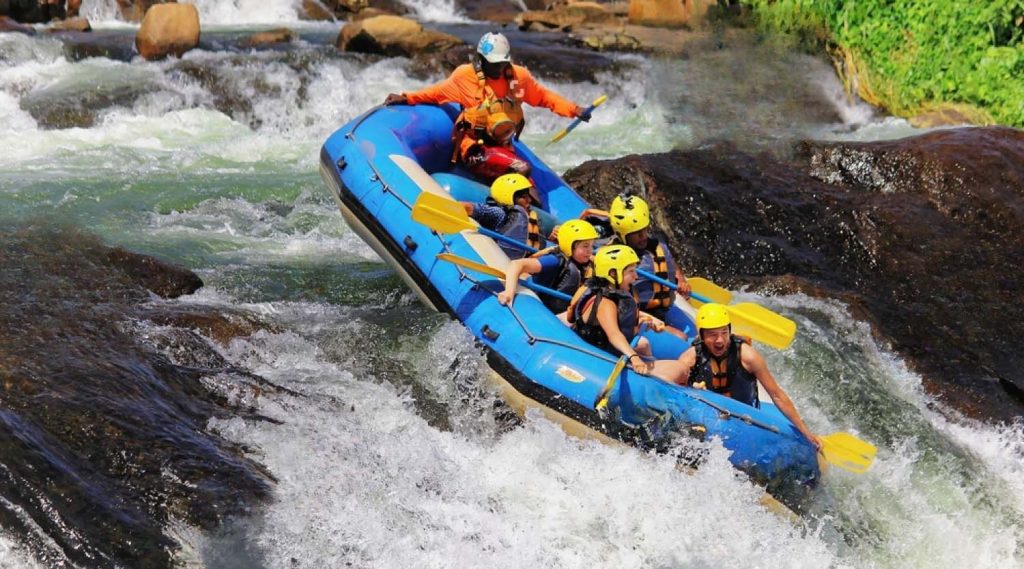
One cannot overlook the unique charm of the Ugandan tour experience: the expert guidance of both expat and local rafting professionals, each ensuring safety without compromising the thrill. Their expertise comes handy, especially when navigating notorious rapids like the “Bad Place.” But alongside the adrenaline highs, the Ugandan rafting experience also offers moments of serenity. The clean, warm water is perfect for those impromptu dips under the Ugandan sun, surrounded by cormorants, monkeys, and the occasional sunbathing crocodile.
But, as intense as the experience can be, every adventurer is well-cared for. The days of thrilling challenges are balanced by nights at serene resorts like the Jinja Nile Resort, where the tales of the day’s adventure unfold against the backdrop of the majestic Nile.
Rafting on the Nile is just one of the facets that makes a Ugandan tour distinct. From the wild rides on the Nile to gorilla treks in Bwindi and the vibrant life of Kampala, Uganda truly is the hidden gem that Winston Churchill once termed as “the pearl of Africa.” Whether it’s rafting or witnessing the unparalleled beauty of the Rwenzoris, Uganda offers experiences that are raw, authentic, and far removed from the usual tourist trails.
So, if you’re seeking an adventure that blends thrills, nature, and authentic African experiences, a Ugandan tour should be on your bucket list. And after conquering the Nile, what awaits next in this gem of Africa? The next chapter of your journey beckons, filled with mountain peaks, endangered gorillas, and the rich culture of the Ugandan people. Stay tuned for more!
Sipi Falls
Enjoy the tranquility of a series of three waterfalls, surrounded by picturesque views of the Karamoja plains and Mount Elgon. Great for meditation, or just, you know, for those perfect Instagram snaps.
Ever wanted to practice your best ‘oh-so-deep-in-thought’ pose amidst nature? Or maybe capture that ‘accidentally candid’ moment with waterfalls conveniently cascading in the backdrop? Say no more! Sipi Falls is your dream spot.
Now, if you’re imagining a measly trickle of water, you’re in for a majestic surprise. Uganda’s Sipi isn’t just one, not two, but three roaring waterfalls! The main act, our numero uno, drops from a dizzying 95 meters. It’s basically nature’s way of saying, “Go big or go home.” And if that doesn’t wet your adventure whistle, there’s the slightly shorter but still dazzling Simba Falls and the ever-so-elegant Ngasire Falls. It’s like a triple-decker sandwich of watery goodness.
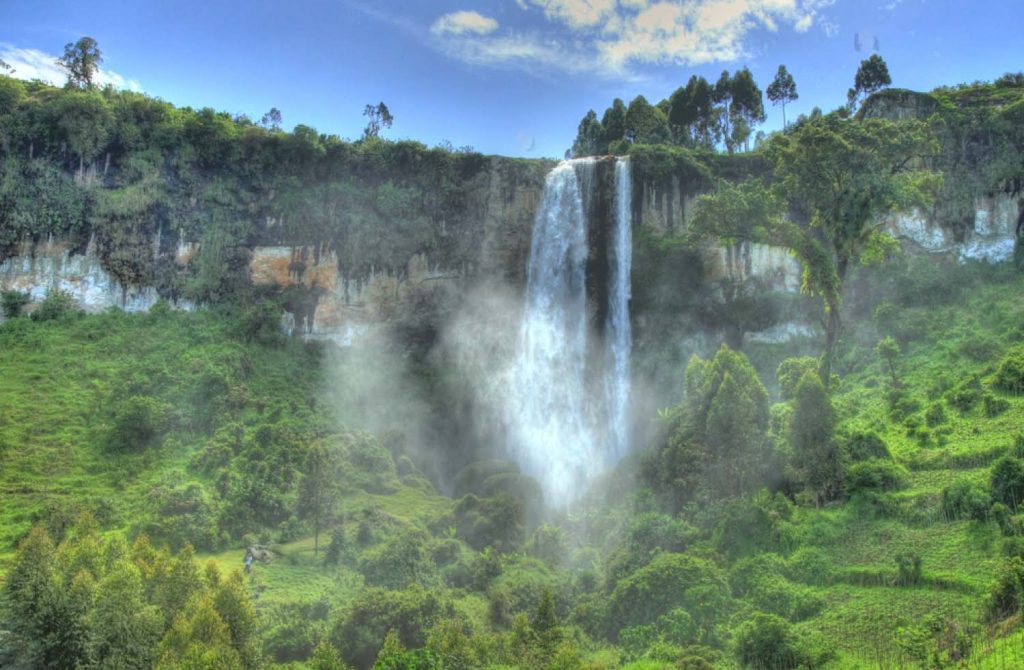
“Where does the quirky name ‘Sipi’ come from?”, I hear you ask. Well, it’s not from sipping on a piña colada, although that does sound delightful. No, it’s inspired by ‘sep’, a local term referring to a plant that (wait for it) slightly resembles a wild banana. So, while you’re busy capturing the falls, don’t forget to strike a pose with this funky, faux-banana plant. Who knew botany could be this entertaining?
Located just a stone’s throw (if you have a very strong arm) from the town of Sipi, and a bit of a scenic marathon from Kampala, this spot is the ideal escape. It’s serene, it’s mesmerizing, and oh boy, is it Instagrammable. And here’s the cherry on the sundae: the local vicinity thrives on not just tourism, but coffee too! So, post waterfall gawking, you can take a minute to sip on some authentic Ugandan brew. It’s caffeine and cascades, all in one trip!
In a nutshell: if you’re on a Ugandan tour and miss out on Sipi Falls, you’re essentially skipping the rollercoaster at an amusement park. So grab that camera, pack those meditation cushions (or just your phone for the ‘gram), and let’s make some waterfall memories! And once you’re done soaking in the misty vibes, buckle up, because Uganda has even more gems waiting to be discovered…
Best time to visit Uganda
June to August and December to February are the driest months, ideal for gorilla tracking and Ugandan tour adventures in the national parks. But if you fancy fewer crowds and the sweet embrace of lower prices (because who doesn’t love a good deal?), consider diving into the wetter months. Just a little tip: bring those waterproofs, or you might just invent a new wet t-shirt contest!
Now, here’s the scoop: Uganda straddles the equator. So, while you might expect constant sunshine and rainbows, Mother Nature loves to throw in a twist or two. Don’t fret, it just means Uganda is ready for a visit any time of year. The place is like that friend with an open-door policy – always ready for a party or a chill-out session.
You see, Uganda is blessed with two dry seasons and two wet seasons. It’s like a weather buffet, something for everyone. You want to stalk some mountain gorillas (with your camera, of course)? Dry seasons are your best bet. These primates, in their quest for food, tend to wander higher up during dry spells. But during the wet seasons, they stay low, making your trek somewhat less sweaty. And who knows? You might even stumble upon them having a wild banana party, although I may have just made that up.
If birdwatching tickles your fancy, you might want to consider the end of May to September. And if you’re looking to spot those migrating birds from the colder climes, they usually drop by between November and April. So, you could say Uganda is like the avian version of a five-star hotel, always hosting some feathery VIPs.
Now, for families with kiddos, the best time for your Ugandan tour might be during the summer break between June to August or in the cozy embrace of the last two weeks of December. Because let’s be honest, what better way to spend your holidays than watching wildlife rather than just another holiday movie rerun?

Oh, and a special mention for the budget-conscious travelers (aren’t we all?). The rainy months, like April, May, October, and November, see fewer tourists and more discounts! It’s a win-win. Sure, there’s a bit more rain, but as the old Ugandan saying goes (okay, maybe it’s just my saying): “A little rain never hurt anyone, especially if it brings down hotel prices!”
Feeling the urge to maximize your Ugandan tour? A 10-14 day expedition should quench your wanderlust. After all, Uganda is not just a one-week stand; it’s a long-term relationship!
Ready to move on? Let’s dive into how to coordinate your safari activities with Uganda’s climate because, trust me, it’s not just about packing sunscreen and bug spray!
Coordinating Safari Activities with the Weather & Climatic Patterns in Uganda
So, you’ve decided on Uganda.
Alrighty then, let’s get to the nitty-gritty of things! Picking the right time for your Ugandan tour is kinda like choosing the right outfit for a date – it’s got to match the occasion! Let’s not forget about those Instagram pics; after all, if it wasn’t on social media, did it even happen?
First off, mountain gorillas. Those magnificent, furry celebrities of Uganda. Now, during the wet season, they’re a bit lazy (relatable, right?). They lounge around in the lower slopes since there’s food aplenty. Think of it as their version of food delivery. So, if you aren’t too keen on hiking for hours or turning your adventure into an unintended boot camp, this might be your time. But remember, trekking can get a tad slippery when it’s wet. So, unless you fancy mud facials, take heed!
Now, for those with an undying love for other wildlife, parks like Queen Elizabeth and Murchison Falls are your haven during the dry season. With vegetation playing hard-to-get, spotting those majestic creatures becomes a cakewalk. Less green, more scene, if you catch my drift. Also, with fewer mud pools to navigate, you can expect smoother rides and less off-roading adventures (unless you’re into that sort of thing).
Considering a stop at Kidepo Valley? Well, it’s got a personality of its own. While the rest of Uganda is juggling between dry and wet, Kidepo Valley dances to its own tune with one long dry season and one wet season. And when it’s dry? The wildlife does the predictable thing and hangs out near the watering holes. It’s like watching a live National Geographic episode, but without the voiceover!
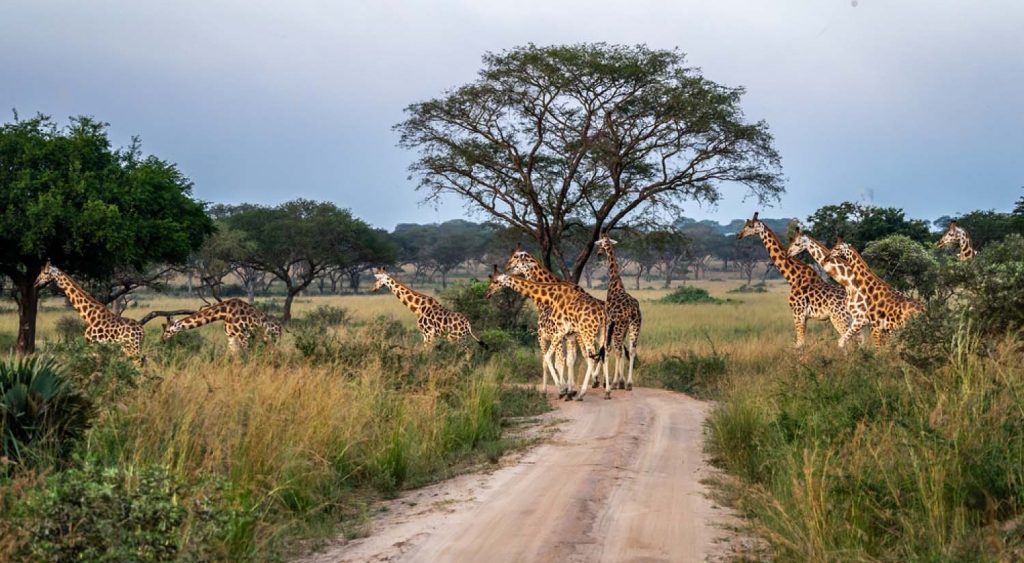
For those who are all about our feathered friends, Uganda won’t disappoint. Birds love a good rainy season party, making it the prime time for breeding. More food, more chirping, more action. But, with all that lush green around, it might be a bit of ‘Where’s Waldo?’ with wings.
As for temperature? Well, Uganda’s got its highs and lows (don’t we all?). Depending on where you are – be it the highlands or the valley – you might need to swap your tank top for a cozy sweater or vice versa. Either way, dressing in layers is the key. Think of it as an onion, but without the tears.
Budgetary Timing of Your Visit to Uganda
Money, money, money! Let’s talk about everyone’s favorite topic – the budget. If you’re looking to stretch those dollars, pounds, or euros, consider the wet season. It’s like Black Friday for safarigoers! Lower prices, fewer crowds, and a few unexpected rain showers to add to the drama. Besides, who can put a price tag on the joy of watching a lion or elephant doing their version of the rain dance?
But if you fancy rubbing shoulders (or binoculars) with the many, then the summer months, particularly from June to September, are packed. Just remember, with great popularity comes… well, greater prices.
In short, whether you’re a sun seeker, a rain lover, or somewhere in between, Uganda welcomes you with open arms. And probably a monkey or two. So pack your bags, your humor, and a sprinkle of adventure – the Pearl of Africa awaits! But before you sprint off, let’s touch upon how altitude affects the Ugandan vibes.
Safety tips for exploring Uganda’s natural wonders
- Hire Local Guides: They know the landscape, the wildlife, and can shout in the local monkey dialect.
- Stay Hydrated: The African sun doesn’t play. Always carry water.
- Respect Wildlife: They were here first. Keep a safe distance and no feeding!
So, ready for your Ugandan adventure? Uganda be kidding if you’re not (sorry, had to)! Whether it’s the chaotic charm of Kampala or the mesmerizing beauty of its parks, Uganda beckons with a promise of unforgettable memories. Safe travels! 🌍🦁🦍🌳


